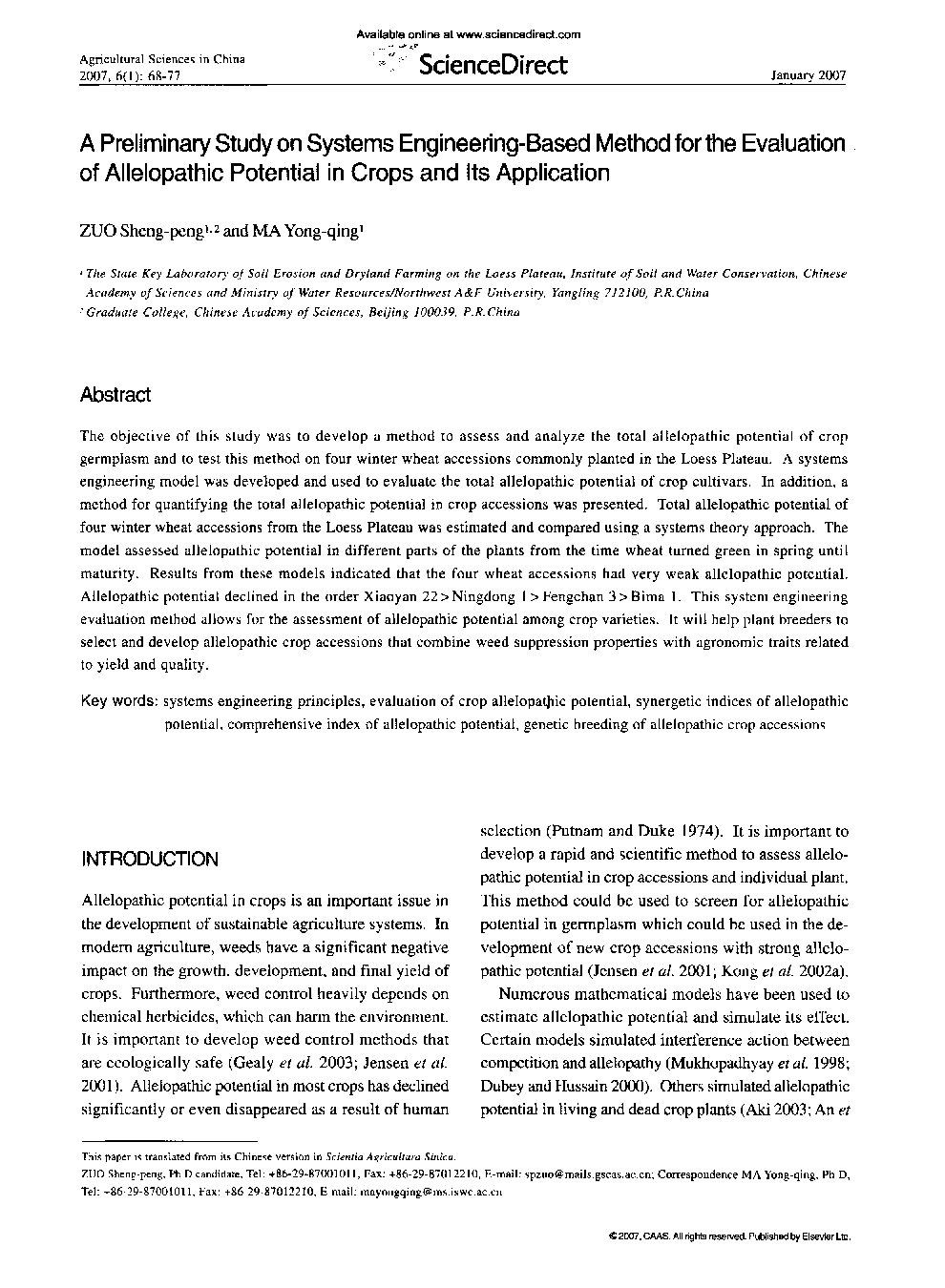| Article ID | Journal | Published Year | Pages | File Type |
|---|---|---|---|---|
| 4490936 | Agricultural Sciences in China | 2007 | 10 Pages |
The objective of this study was to develop a method to assess and analyze the total allelopathic potential of crop germplasm and to test this method on four winter wheat accessions commonly planted in the Loess Plateau. A systems engineering model was developed and used to evaluate the total allelopathic potential of crop cultivars. In addition, a method for quantifying the total allelopathic potential in crop accessions was presented. Total allelopathic potential of four winter wheat accessions from the Loess Plateau was estimated and compared using a systems theory approach. The model assessed allelopathic potential in different parts of the plants from the time wheat turned green in spring until maturity. Results from these models indicated that the four wheat accessions had very weak allelopathic potential. Allelopathic potential declined in the order Xiaoyan 22 > Ningdong 1 > Fengchan 3 > Bima 1. This system engineering evaluation method allows for the assessment of allelopathic potential among crop varieties. It will help plant breeders to select and develop allelopathic crop accessions that combine weed suppression properties with agronomic traits related to yield and quality.
